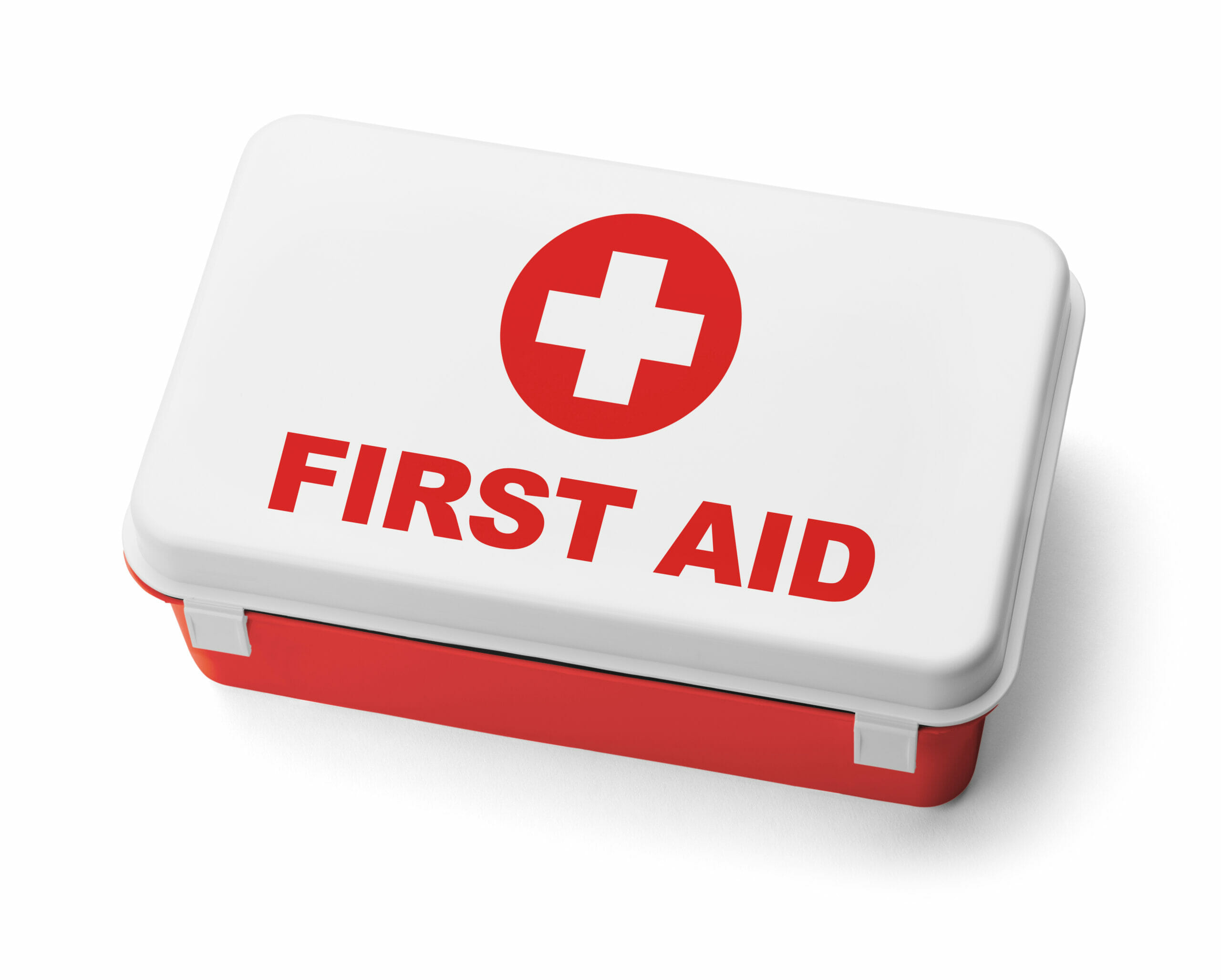First Aid Kits
New Braunfels, TX, March 1, 2023

Let’s talk about first aid kits.
Each of us at any time may need to use a first aid kit. First-aid kits are vital in protecting workers from serious injury or illness. In many cases, having a well-stocked first-aid kit on hand can mean the difference between life and death. For example, if an employee is injured and starts bleeding heavily, having a first-aid kit with bandages and other supplies can help stop the bleeding and save the employee’s life. In addition to saving lives, first-aid kits can help prevent minor injuries from becoming major ones. For example, if an employee cuts their hand at work, having a first-aid kit with antiseptic wipes can help clean the wound and prevent infection. First aid supplies are required to be easily accessible under 29 CFR 1926.50. First aid kits should conform to the ANSI standards and the contents should be adequate for small work sites. When larger operations or multiple operations are being conducted at the same location, employers should determine the need for additional types of supplies or equipment. Often as our days gain momentum we may fail to inspect our first aid supplies and verify they are readily accessible if needed. Today we will discuss three key points of maintaining our first line of defense…
Verify that you have the appropriate first-aid kit
OSHA and ANSI both have guidance that state medical kits are to be readily available and suitable to the job(s) being performed. At a minimum, the kit shall contain enough supplies for each member of the crew plus two. ANSI addresses the quantity of each item supplied and its minimum, which OSHA has adopted. Kits should contain supplies that are mindful of the type of work being performed. Keep in mind that tower crews’ kits may differ from office first aid kits. Kits should be made of a material to protect its contents. They should be waterproof and in some cases heat resistant depending on where the kit resides. Crews working in remote areas should have access to supplies that are more in line with a trauma kit as a response from EMS or transportation to a treatment facility may be of great distance.
Stage or locate the first aid kit to where it is readily accessible
After we have arrived on site and as part of the JHA process, we must give thought as to where we should stage our first aid kit or where it is located, in the event of an incident. Leaving our first aid kit in our vehicle located 3 city blocks away, due to parking, is not going to benefit us should the need arise. Perhaps we are working in a shelter that is being decommissioned, we may need to bring ours from our vehicle. Speaking of vehicles, is your vehicle properly labeled as to where your first aid kit is located? Should the first aid kit be in our work vehicles in the same general location, each member of the team must have knowledge of its location in the event of an emergency. Having our first aid kit(s) staged near the work being performed might be the difference in a minor situation becoming a major one.
Inspect the contents within the first aid kit
When is the last time you physically opened the first aid kit and inspected it? Are we simply checking the “Yes” box that it is somewhere on our vehicle, or “Yes” I do see it hanging on the wall over there? We need to be inspecting our first kits for expiration dates of items as well as items that may need to be restocked. Looking inside the kits to verify that the contents have not been destroyed, crushed, or manipulated by the elements deeming them useless is crucial. It is each of our responsibilities to verify the supplies on our vehicles, office kits and other supplies are clean, stocked, and ready for use.
If you want more information on those topics, reach out to the Ontivity safety team at safety@ontivity.com, and we will get you taken care of.
